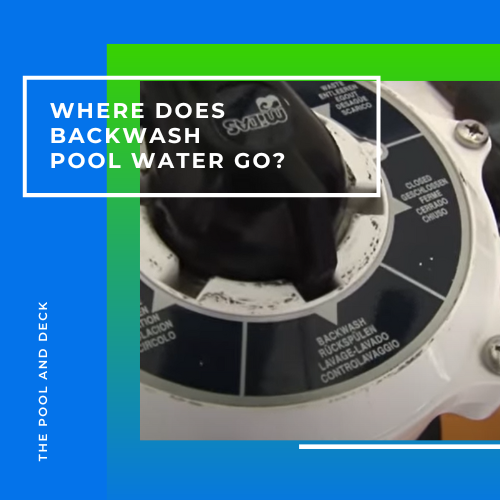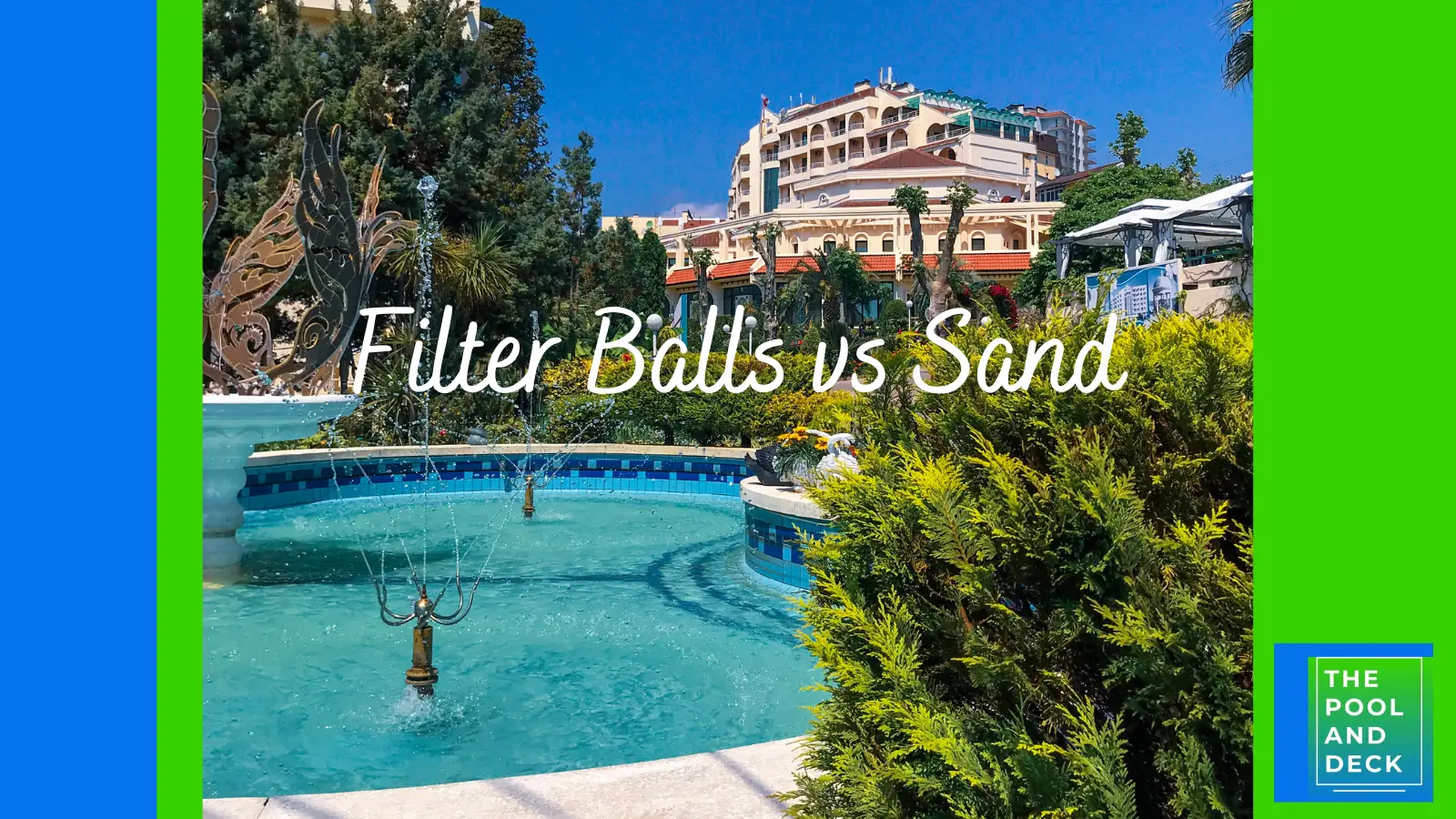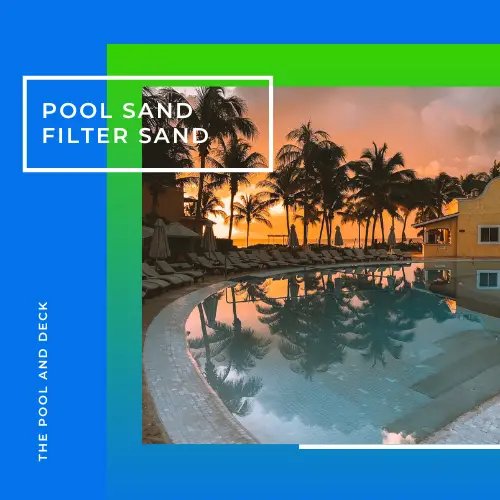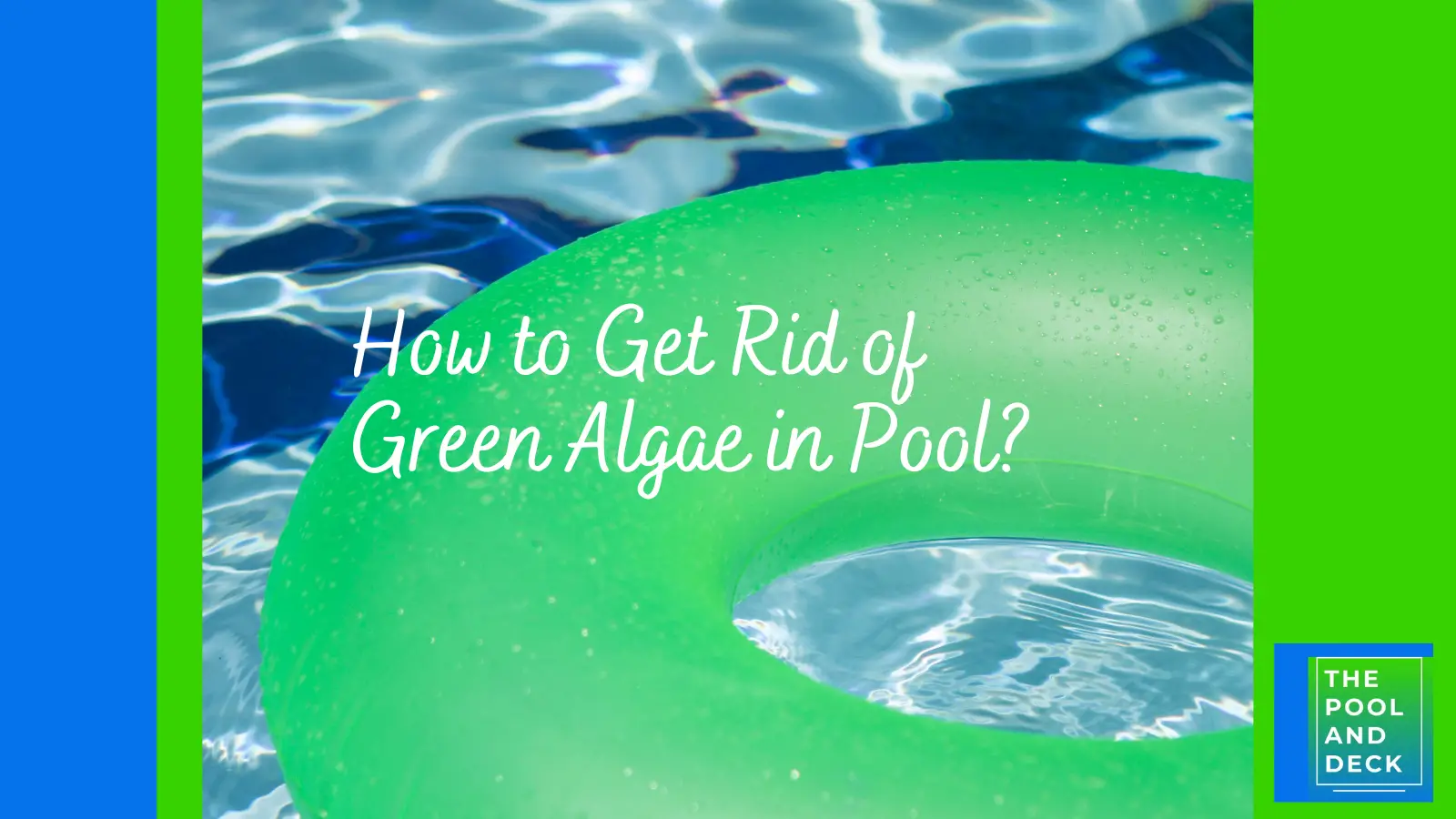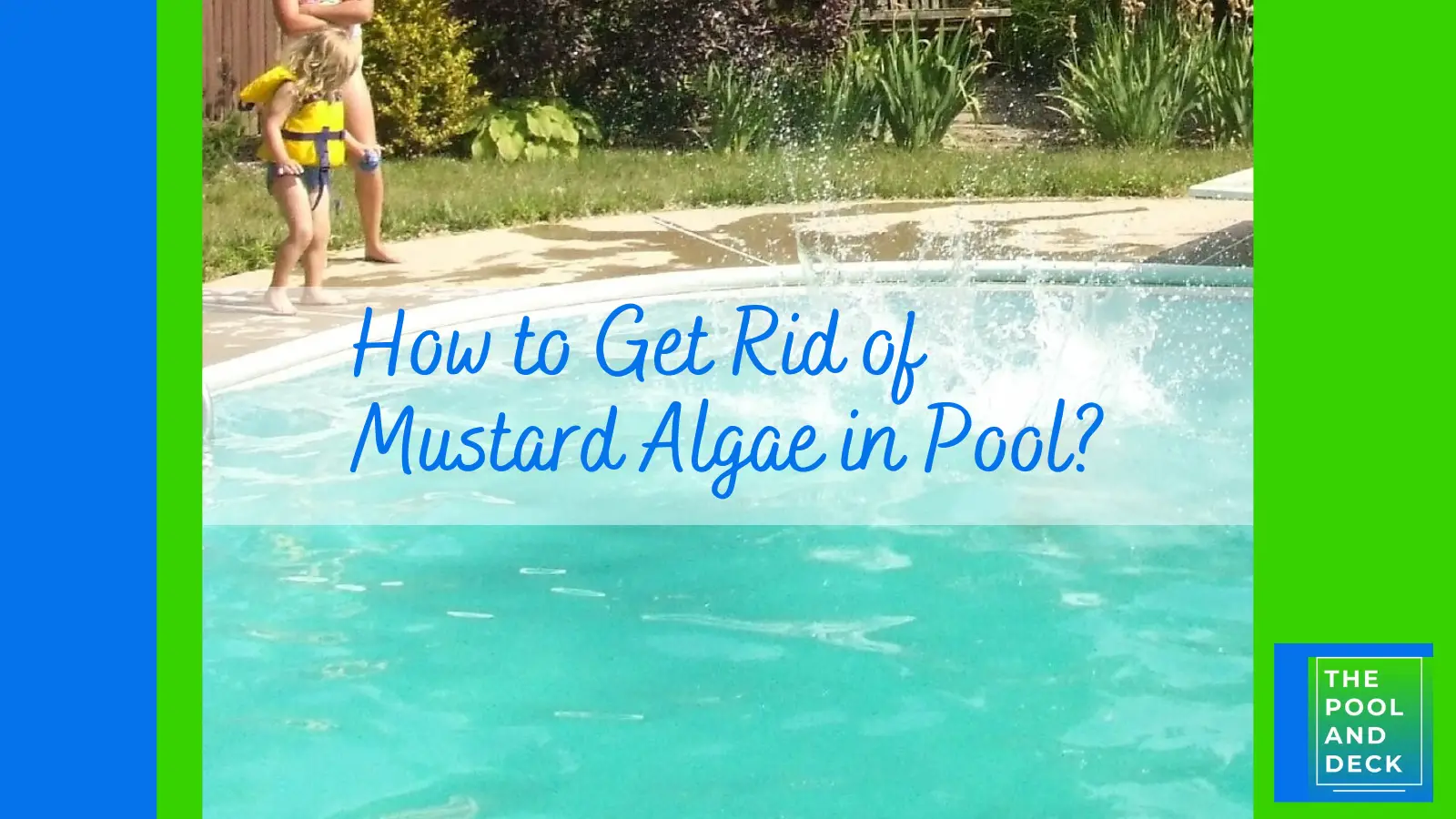How to Fix Chlorine Lock in a Pool? Solved!
As an Amazon Associate, I earn from qualifying purchases.
Are you wondering, “Why is my pool water still cloudy, despite adding more and more chlorine?” The test shows adequate levels of chlorine, but it does not seem to be working!
So what’s going on? Most likely, this is a symptom of chlorine lock in a pool.
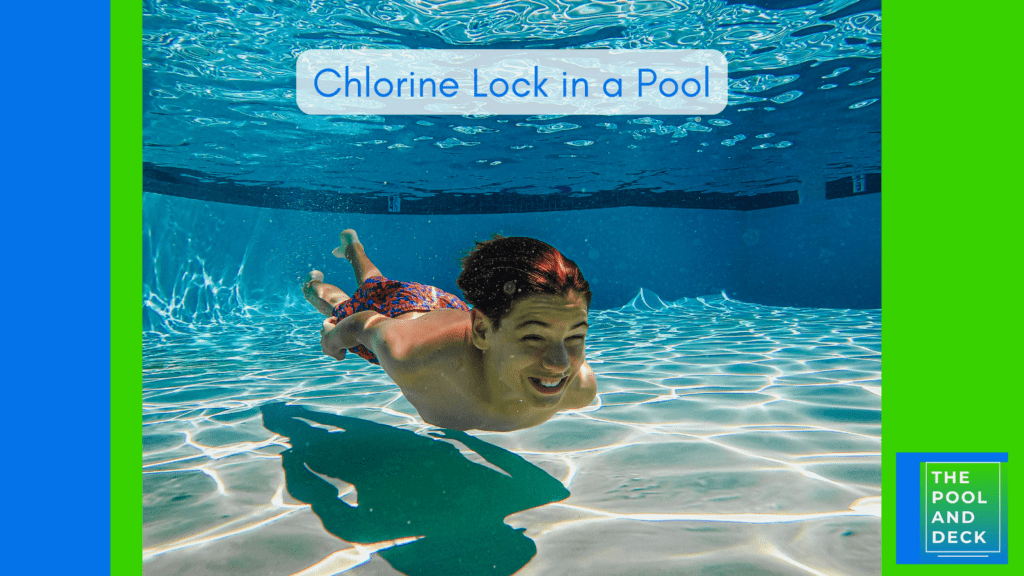
Another related issue is chlorine demand. Chlorine demand describes a situation where contaminants in the pool consume chlorine faster than you can add it.
Both problems lead to the same outcome: poor water quality and wasted time trying to fix it.
In this article, I will explain chlorine lock, how it differs from chlorine demand, and most importantly, how you can fix these problems and prevent them from occurring in the future.
KEY TAKEAWAYS
- Chlorine lock is not about chlorine being trapped but rather about its reduced effectiveness due to high cyanuric acid (CYA) levels.
- Chlorine demand occurs when contaminants consume chlorine faster than it can be added, resulting in low or absent free chlorine readings.
- Signs of chlorine lock include a strong chlorine smell (chloramines), cloudy or green water, and low free chlorine levels despite adding more chlorine.
- To fix a chlorine lock, lower CYA levels by partially draining and refilling the pool. CYA reducers are an alternative but can be expensive and less reliable.
- To fix chlorine demand, shock the pool with a high dose of unstabilized chlorine (breakpoint chlorination) to destroy contaminants.
Table of Contents
What is Chlorine Lock in a Pool?
In reality, chlorine lock happens when chlorine’s ability to sanitize your pool is reduced. The chlorine is still present in the water, but it can’t effectively kill bacteria or algae.
This often leads to cloudy or green water, even though your test kit might show normal chlorine levels.
So, what’s the culprit? Most of the time, it’s an imbalance in your water chemistry—usually too much cyanuric acid (CYA).
The Role of Cyanuric Acid (CYA)
Cyanuric acid (CYA) is a stabilizer that protects chlorine from sunlight. Without it, sunlight can break down chlorine within hours, leaving your pool unprotected.
The Cyanuric Acid (CYA) molecule comprises 3 atoms each of Carbon, Nitrogen, Oxygen, and Hydrogen. The Nitrogen atoms in CYA can “lock” the hypochlorite ion (OCL-) ions through a weak bond.
As long as the Chlorine atom is attached to the Nitrogen atom, it is not “free”. It is protected from the harsh UV rays of the sun.
But too much of a good thing is not necessarily good. When CYA levels climb above 50 parts per million (ppm), it binds too tightly to chlorine. This limits chlorine’s ability to sanitize your pool, creating the chlorine lock.
The ideal range for CYA levels is 30-50 ppm. Staying within this range ensures your chlorine works effectively while still being protected from sunlight.
Signs Your Pool Might Have Chlorine Lock
How do you know if your pool is experiencing chlorine lock? The symptoms can often confuse even experienced pool owners because they overlap with other water chemistry problems.

Here are the common signs to watch for:
- Strong chlorine smell: A powerful chlorine odor usually means chloramines are present. Chloramines form when chlorine reacts with contaminants in the pool, and they indicate ineffective sanitation—not too much chlorine.
- Cloudy or green water: When chlorine can’t do its job, algae and bacteria can take over, leading to murky or green water.
- Low free chlorine readings: If your test kit consistently shows low free chlorine levels despite adding more chlorine, it could be due to chlorine lock.
- Skin and eye irritation: Poorly balanced water can lead to discomfort for swimmers, like red eyes or itchy skin.
Test your pool water, especially cyanuric acid (CYA), and free chlorine readings—they’ll help you determine whether you’re dealing with chlorine lock or another problem, such as chlorine demand.
Chlorine Lock vs. Chlorine Demand
Sometimes, what looks like a chlorine lock may be an issue of chlorine demand.
What is Chlorine Demand?
Chlorine demand occurs when the contaminants in your pool consume chlorine faster than you can add it. These contaminants include:
- Organic matter, like leaves or dirt.
- Body oils, sweat, and sunscreen from swimmers.
- Algae growth or other microorganisms.
In addition, chlorine demand can also increase due to high pH or an increase in sunlight.
When your pool has high chlorine demand, there’s little or no free chlorine left to sanitize the water. This can result in cloudy water, algae blooms, or even a health hazard.
Unlike chlorine lock, which is caused by high CYA levels, chlorine demand is due to overwhelming contamination.
Key Differences Between Chlorine Lock and Chlorine Demand
Here’s how to tell these two problems apart:
| Aspect | Chlorine Lock | Chlorine Demand |
| Free Chlorine | High but bound to CYA. | Very low or zero, used up by contaminants. |
| Combined Chlorine | Normal | High |
| Cause | Excessive CYA levels (> 50 ppm). | High pool usage and high contaminant levels. |
| Symptoms | Chlorine is not effective, cloudy water. | Low free chlorine, Chloramine smell, algae blooms, murky water. |
Test the pool water with a reliable pool test kit to determine which issue you’re facing.
High CYA levels mean chlorine lock while high combined chlorine levels mean chlorine demand.
Recommended Chemical Test Kit
Taylor K-2005 Complete DPD 9-in-1 Test Kit
Tests for free & total chlorine, bromine, pH, total alkalinity, total hardness, and cyanuric acid (CYA) levels.
How to Fix Chlorine Lock
If your pool has a chlorine lock, the root cause is almost always high cyanuric acid (CYA) levels. Since CYA doesn’t naturally break down, fixing the problem requires a deliberate approach.
Reducing High Cyanuric Acid (CYA) Levels
- Dilution is the Best Solution
The most effective way to lower CYA levels is by draining a portion of your pool water and replacing it with fresh water. Here’s how:- Test your current CYA levels using a reliable test kit.
- Calculate how much water to drain based on how much you need to lower CYA. For example, if your CYA is 100 ppm and you want to reduce it to 50 ppm, you’ll need to replace 50% of your water.
- Drain and refill in manageable portions to avoid damaging your pool liner or plaster. (Never reduce the pool water by more than 10% at a time to prevent the pool walls from caving in due to hydrostatic pressure).
- Using CYA Reducers
Some products can reduce CYA levels without draining your pool. While these can work in certain situations, they often come with limitations:- They can be expensive.
- Results might be slower or inconsistent.
Choose either Bio-Active BA-CAR-08 Non-Polluting 100-Percent Cyanuric Acid Reducer Powder or Natural Chemistry NC07431 Natural Chem CYA Removal Kit.
Both are very effective. Make sure to follow the instructions on the label when using a CYA reducer.
Why Balancing CYA Matters
Remember, the ideal range for CYA levels is 30-50 ppm. By maintaining this range, your chlorine will work effectively to sanitize your pool while still being protected from sunlight.
If you address high CYA levels, you can eliminate chlorine lock and restore your pool to crystal-clear perfection.
How to Fix Chlorine Demand
If your pool has chlorine demand, the key to solving it is to eliminate the contaminants overwhelming your chlorine. This requires a process called breakpoint chlorination, or shocking the pool.
Shock Treatment for Breakpoint Chlorination
Shocking your pool raises chlorine levels high enough to destroy organic contaminants, chloramines, and algae.
Follow these steps to properly shock your pool:
- Test Your Pool Chemistry
- Use a pool test kit to check free chlorine, combined chlorine, pH, and CYA levels.
- Calculate the total chlorine demand by subtracting your current free chlorine from the amount needed to reach the breakpoint (10 times the combined chlorine level).
- Calculate the Correct Amount of Shock
- Multiply your pool’s water volume by the chlorine demand to determine how much shock to add.
- Use a high-quality chlorine shock product like calcium hypochlorite (cal hypo), which is fast-acting and effective.
- Balance pH Levels Before Shocking
- Ensure your pH is between 7.2 and 7.6. Chlorine is most effective in this range.
- Add the Shock
- Dissolve the cal hypo powder in water and pour it evenly around the pool.
- Run the filter continuously during and after the shock to circulate the chlorine and remove contaminants.
- Retest Your Water
- Test combined chlorine and free chlorine levels after 24 hours.
- Shock once again if combined chlorine levels are still above 1 ppm.
Recommended Cyanuric Acid Free Shock (Cal Hypo) – Powder
HTH 52037 Pool Care Shock Advanced
A fast-dissolving, convenient 4-in-1 Cal Hypo formula that kills bacteria & algae, reduces chlorine odor & irritation, and quickly restores crystal clarity.
What Happens If You Don’t Shock?
Without shocking, contaminants will continue to consume your chlorine at a very high rate, making it impossible to maintain balanced water.
Regular shocking—especially after heavy pool use or storms— prevents the persistence of chlorine demand.
Preventing Chlorine Lock and Chlorine Demand
The best way to avoid the frustration of chlorine lock and chlorine demand is to stay proactive with your pool maintenance. Regular testing, cleaning, and water chemistry balancing is the only practical way of keeping your pool clear, clean, and safe.
Proactive Pool Maintenance
- Test Your Water Weekly
- Use a reliable pool test kit to monitor free chlorine, pH, and CYA levels.
- Catching imbalances early prevents larger problems.
- Clean Your Pool Regularly
- Skim debris, brush pool walls, and vacuum the pool weekly or at least every fortnight.
- Clean your filter and ensure it runs 8-12 hours daily for proper water circulation.
- Balance Pool Chemistry
- Keep pH levels between 7.2 and 7.6 for optimal chlorine performance.
- Adjust alkalinity and calcium hardness as needed to maintain overall water balance.
Managing CYA Levels
- Use Stabilized Chlorine Sparingly
- Products like trichlor tablets contain CYA, which can build up over time. Use them only when CYA levels are low.
- Switch to Unstabilized Chlorine
- When CYA levels are near the upper limit (50 ppm), switch to unstabilized chlorine, like calcium hypochlorite (cal hypo), to avoid further increases.
- Monitor CYA Levels Regularly
- Keep CYA in the ideal range (30-50 ppm) to prevent chlorine lock and ensure your chlorine remains effective.
- Backwashing the pool filter is an opportunity to replenish your pool with fresh water and lower the high CYA levels.
Minimizing Contaminants
- Encourage Swimmers to Shower
- Rinse off sweat, body oils, and sunscreen before entering the pool. This reduces chlorine’s workload.
- Discourage Eating and Drinking in the Pool
- Food particles and spills can introduce contaminants that consume chlorine.
- Cover the Pool When Not in Use
- Pool covers help block debris and reduce UV exposure, which can degrade chlorine.
- The use of a glass pool fence prevents yard contaminants such as dry leaves, grass clippings, etc. from being blown into the pool. They are a safety feature too!
For more information check out my Pool Chemistry for Beginners: With 5 Super Helpful Cheat Sheets!
Frequently Asked Questions (FAQs)
Will the chlorine lock fix itself?
No, chlorine lock requires intervention like draining water or using a CYA reducer to lower CYA levels.
How do you calculate the chlorine demand?
Subtract your current free chlorine from the level needed to break combined chlorine (10x combined chlorine).
What is the difference between residual chlorine and chlorine demand?
Residual chlorine is the chlorine available to sanitize, while chlorine demand is the amount needed to eliminate contaminants.
How can I lower my pool’s CYA levels naturally?
You can’t lower CYA naturally. Dilution through partial draining and refilling is the best method.
Does rainwater affect chlorine levels?
Yes, heavy rain dilutes chlorine and introduces contaminants, increasing the risk of chlorine demand.
How do I test for combined chlorine?
You can test for free chlorine (FC) and total chlorine (TC) using a test kit. Subtract FC from TC to get combined chlorine (CC).
Thank you very much for reading the post. I do hope you found it informative and helpful.



